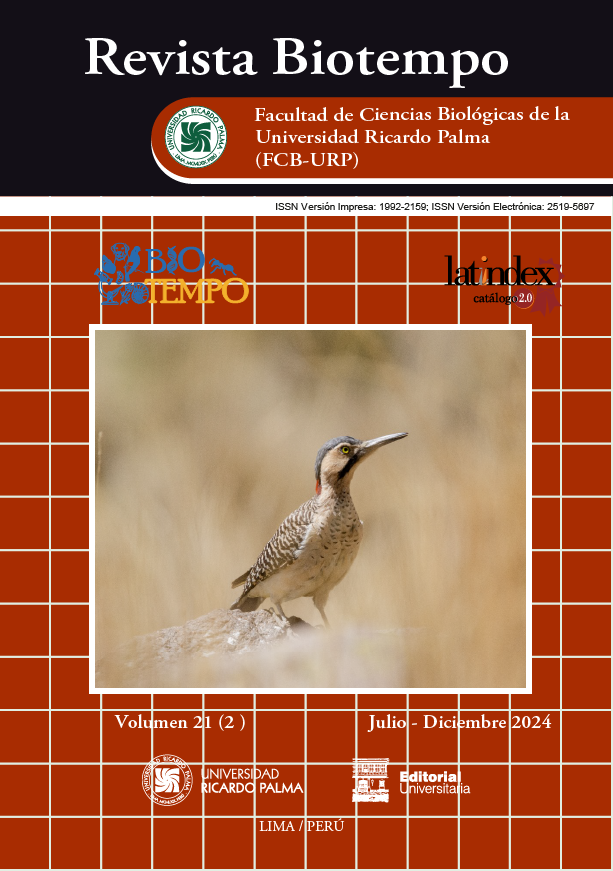Diagnosis of genitourinary infection in hospitalized pregnant women with threatened preterm labor
DOI:
https://doi.org/10.31381/biotempo.v21i2.6879Keywords:
Escherichia coli, infection, preterm birthAbstract
Genitourinary tract infections represent the most frequent complication during pregnancy, with important consequences on the health of the mother and the outcome of the pregnancy. With the objective of diagnosing genitourinary infections in pregnant women with threat of preterm birth hospitalized at the Mariana Grajales University Gineco-Obstetric Provincial Hospital in Villa Clara, Cuba, a descriptive, cross-sectional study was carried out in 85 pregnant women with a gestational age greater than 22 weeks, in the period from January 2017 - December 2020. Microbiological studies were carried out based on culture, conventional and commercial methods according to protocols. Descriptive statistics and the independence test based on the Chi square distribution were used as a summary measure. In the obstetric history, the behavior between nulliparas and those with previous births (51,76% and 48,24%, respectively) was similar, as well as not having previous preterm pregnancies predominated (74,12%). Among the reasons for admission, 39 pregnant women (45,88%) presented symptoms of preterm birth. 71,76% of negative urine cultures were obtained and of the 24 positive clinical samples, 95,83% corresponded to Escherichia coli (Theodore von Escherich, 1885). Vaginal infections were caused by Candida spp. (David Gruby, 1842) (18,18%), Trichomonas vaginalis (Donné, 1836), Mycoplasma hominis (Dienes & Edsall, 1937) and Gadnerella vaginalis (Leopold, 1953) (4,55%). There was similar behavior between nulliparas and those with previous births. Admission due to symptoms of preterm labor predominated. They presented genitourinary infection by E. coli and Candida spp. a moderate number of pregnant women.










